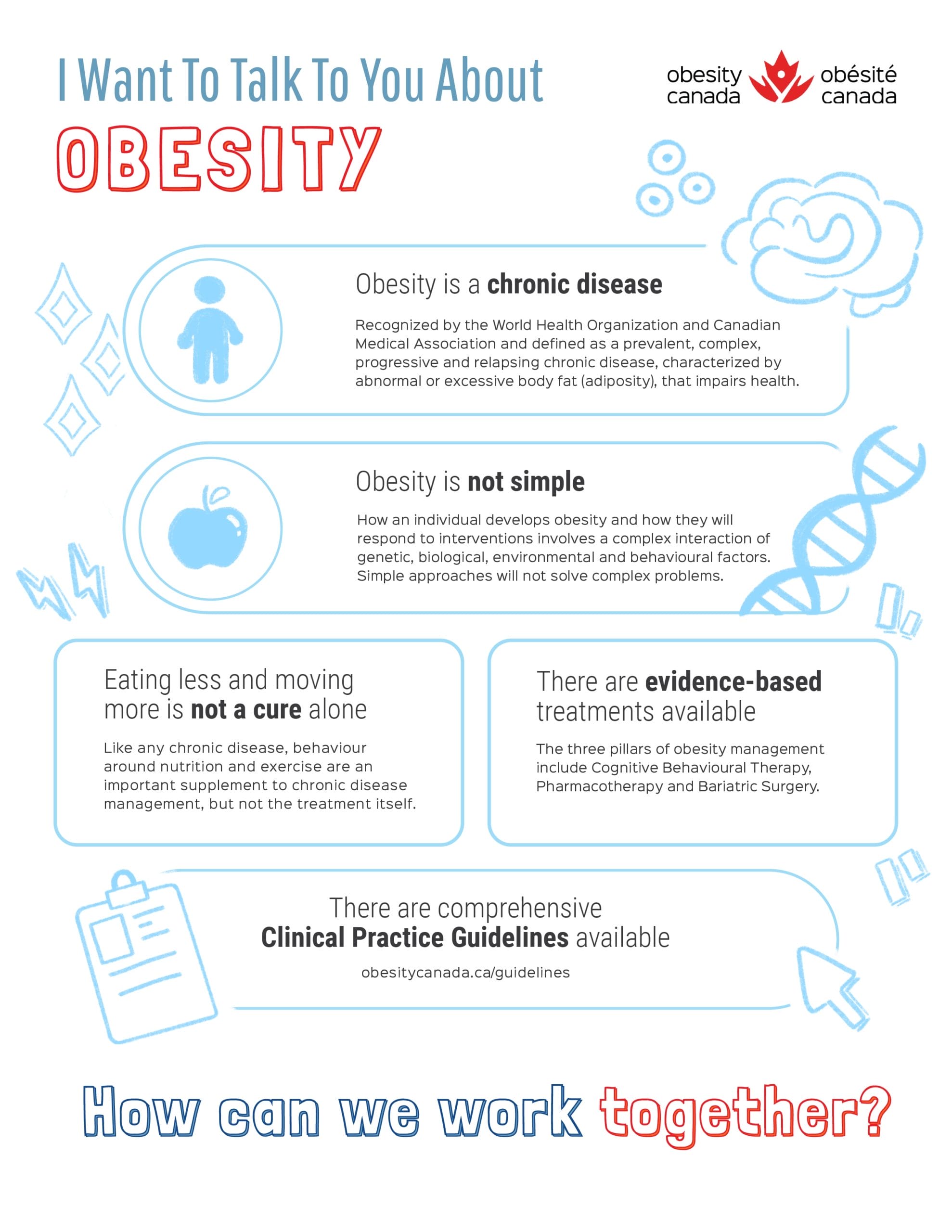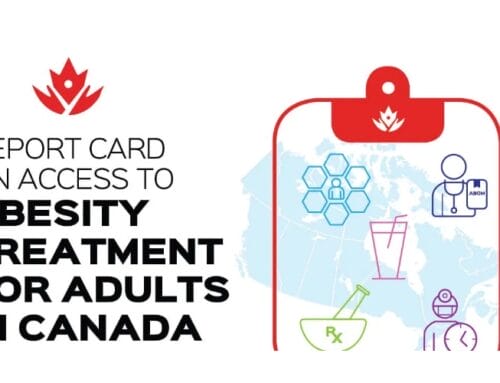Today’s blog is written by Ian Patton, PhD. Ian is the Director of Advocacy and Public Engagement at Obesity Canada.
We just recently passed the 1 year anniversary of the launch of the Canadian Obesity Clinical Practice Guidelines. This groundbreaking work was a massive undertaking that resulted in 19 chapters, including a first of it’s kind chapter on weight bias. This work represents the review of more than 500 000 published articles and resulted in 80 evidence-based recommendations for the management of obesity. The guidelines also made the point of clarifying the definition of obesity as “a complex, progressive and relapsing chronic disease where excess or abnormal adipose tissue impairs health”. This important clarification acknowledges that obesity is not simply about weight or size and cannot be defined by BMI alone (which has been inappropriately used and misunderstood because of how simplistic and easy it is).
The guidelines were quite successful in generating attention and sparking discussion and are now even being used as a standard for international adaptations.
But what are clinical practice guidelines and why do they matter? Typically, guidelines such as these are developed for specific conditions or diseases so that health professionals can have a trusted and reliable source of evidence-based recommendations on how to appropriately manage that condition for their patients. In the case of obesity, where doctors generally do not receive much, if any, training in the disease, clinical practice guidelines can be a useful tool in spreading important information about how to help patients.
The problem however is that uptake of this information and the recommendations, can be quite a slow “top down” process. The experts in the field get together and generate the guidelines and then that is published and slowly spread to the masses of doctors and health professionals who should be making use of them. Even more gradually, that knowledge will trickle down to the population of patients who could benefit from it.
The vision for the Canadian Obesity Clinical Practice Guidelines includes an additional “bottom up” knowledge translation strategy. We hope that Canadians living with obesity can be made aware that the guidelines exist and there are various treatment and management options available that are evidence-based. With that knowledge, we hope they will be empowered to ask questions of their health professionals and create a demand for more uptake of the guidelines.
There are a number of ways this bottom-up approach can be done including educational events and resources like our Connected 2021 conference, our OC-Connect online community, and our Connected Conversations webinar series.
Here is another resource to add to the mix. Many people have said that they are hesitant to talk to their health professionals about obesity or that their doctor has made comments in the past that suggest they are not up to date on obesity science (or willing to discuss obesity treatments). In order to help these conversations happen and to direct these health professionals to the Clinical Practice Guidelines, we created this simple infographic. If you are someone living with obesity, download this, send it to your doctor, or print it off and take it in with you to an appointment.
The more people are asking about evidence-based obesity management, and the more health professionals being directed to the Clinical Practice Guidelines, the faster we can make a difference for individuals living with obesity.





